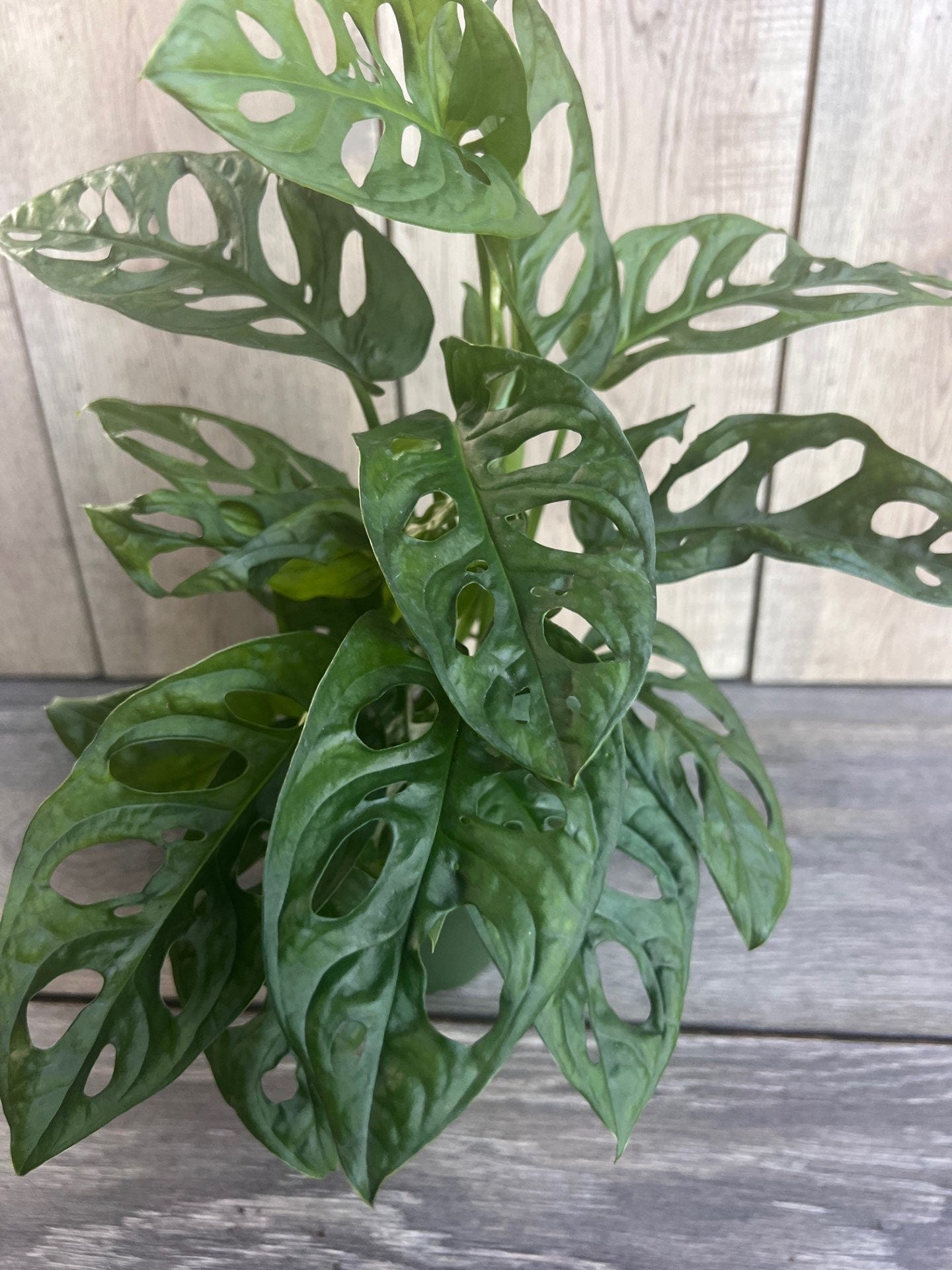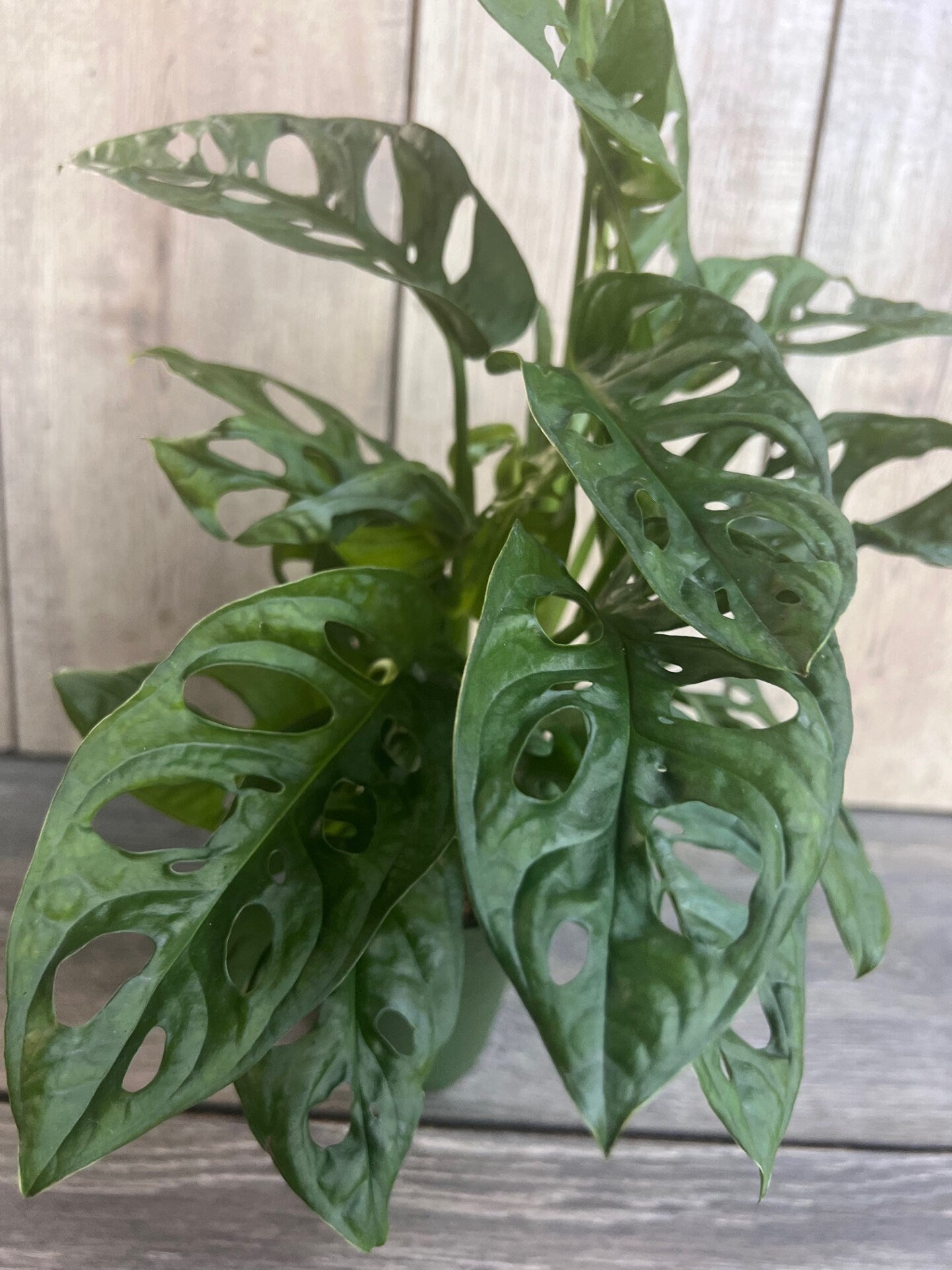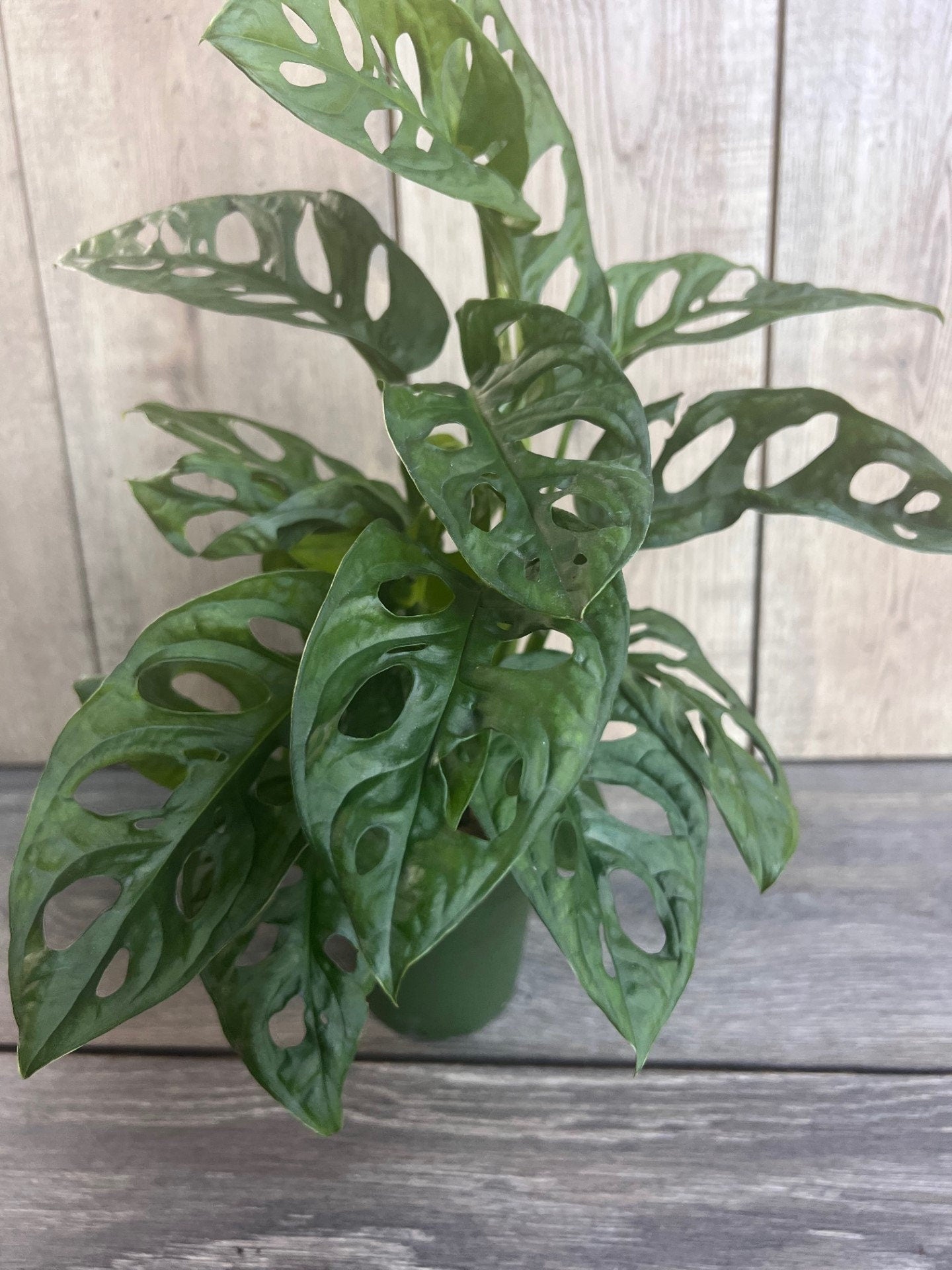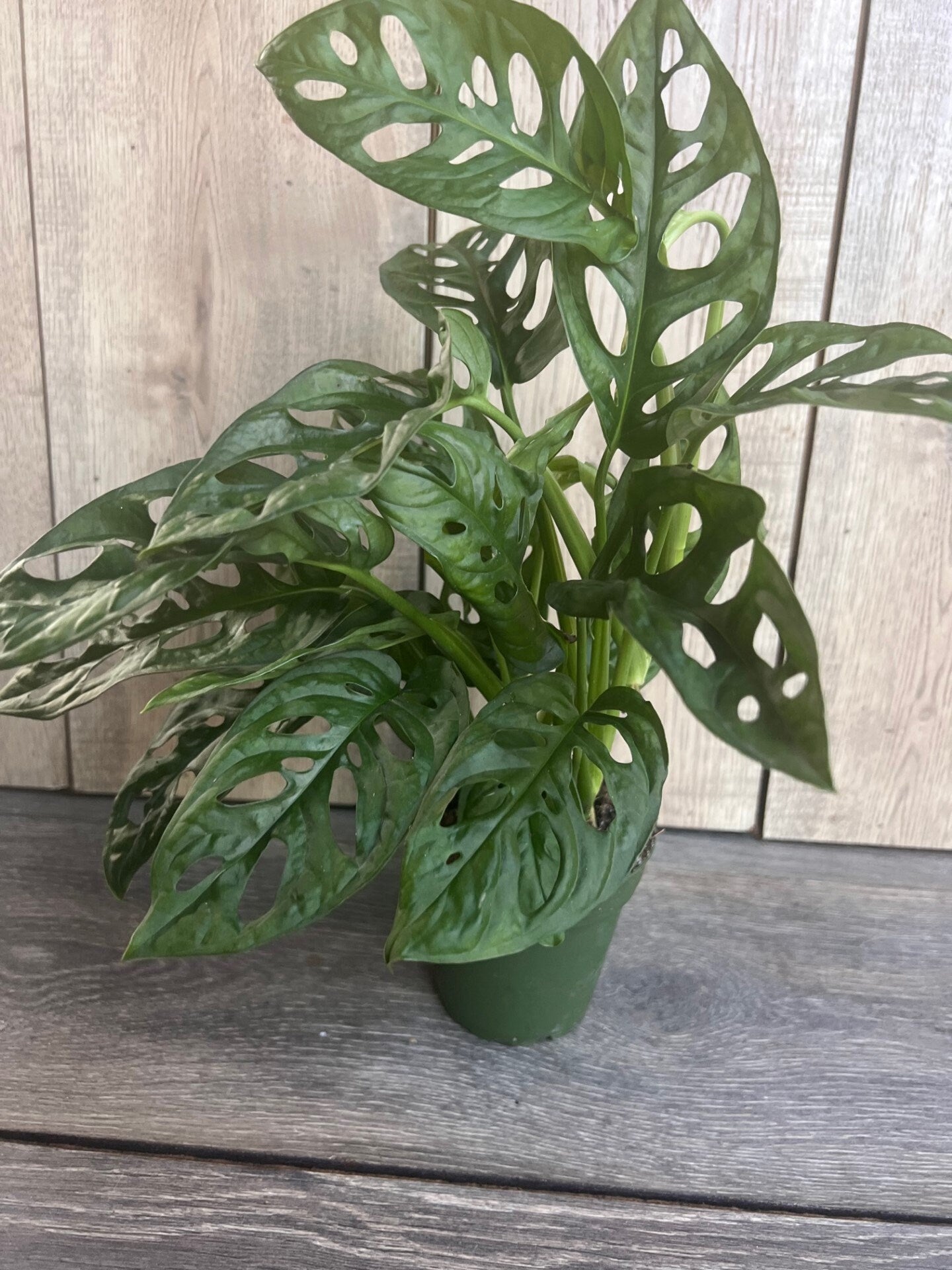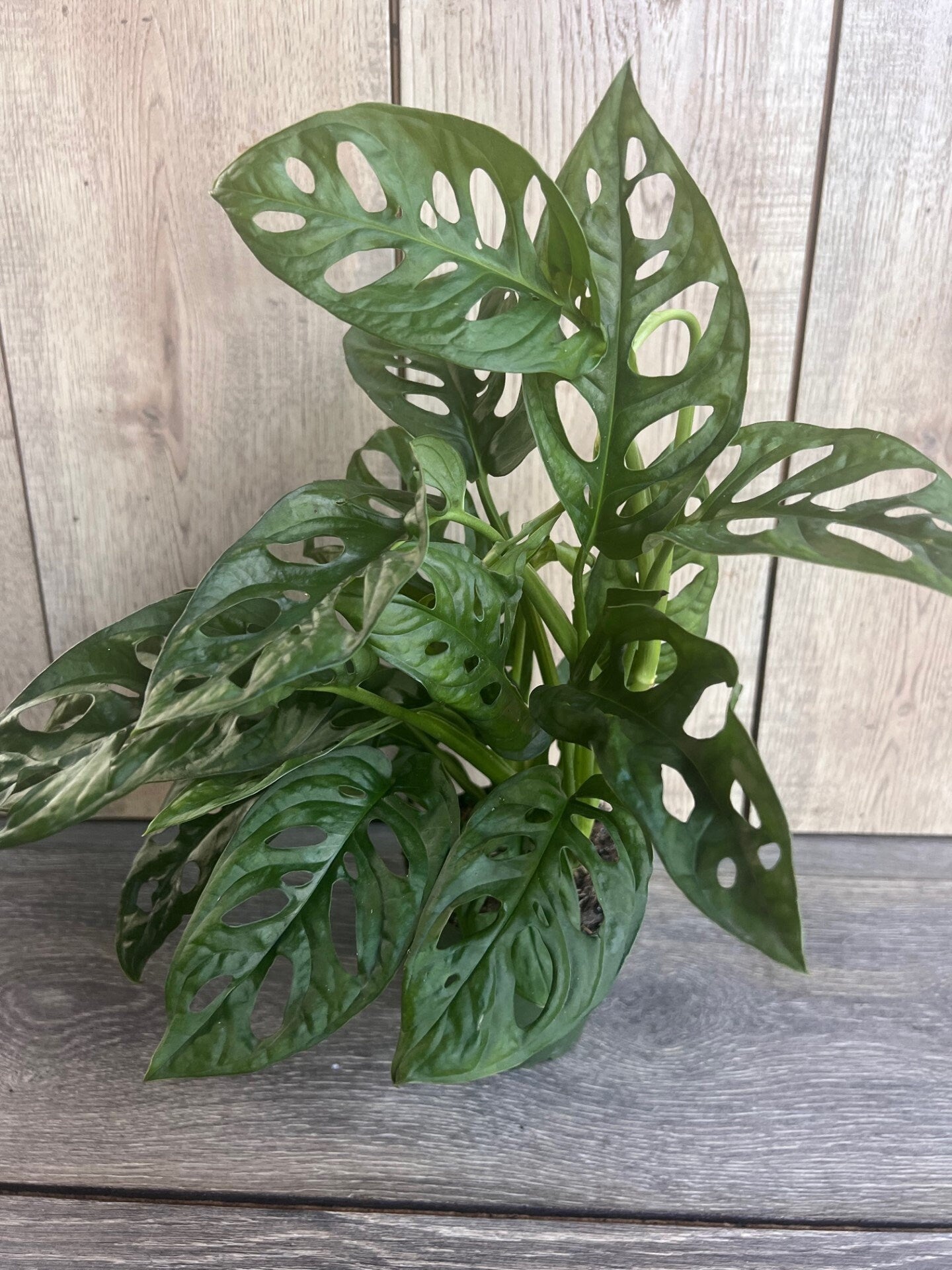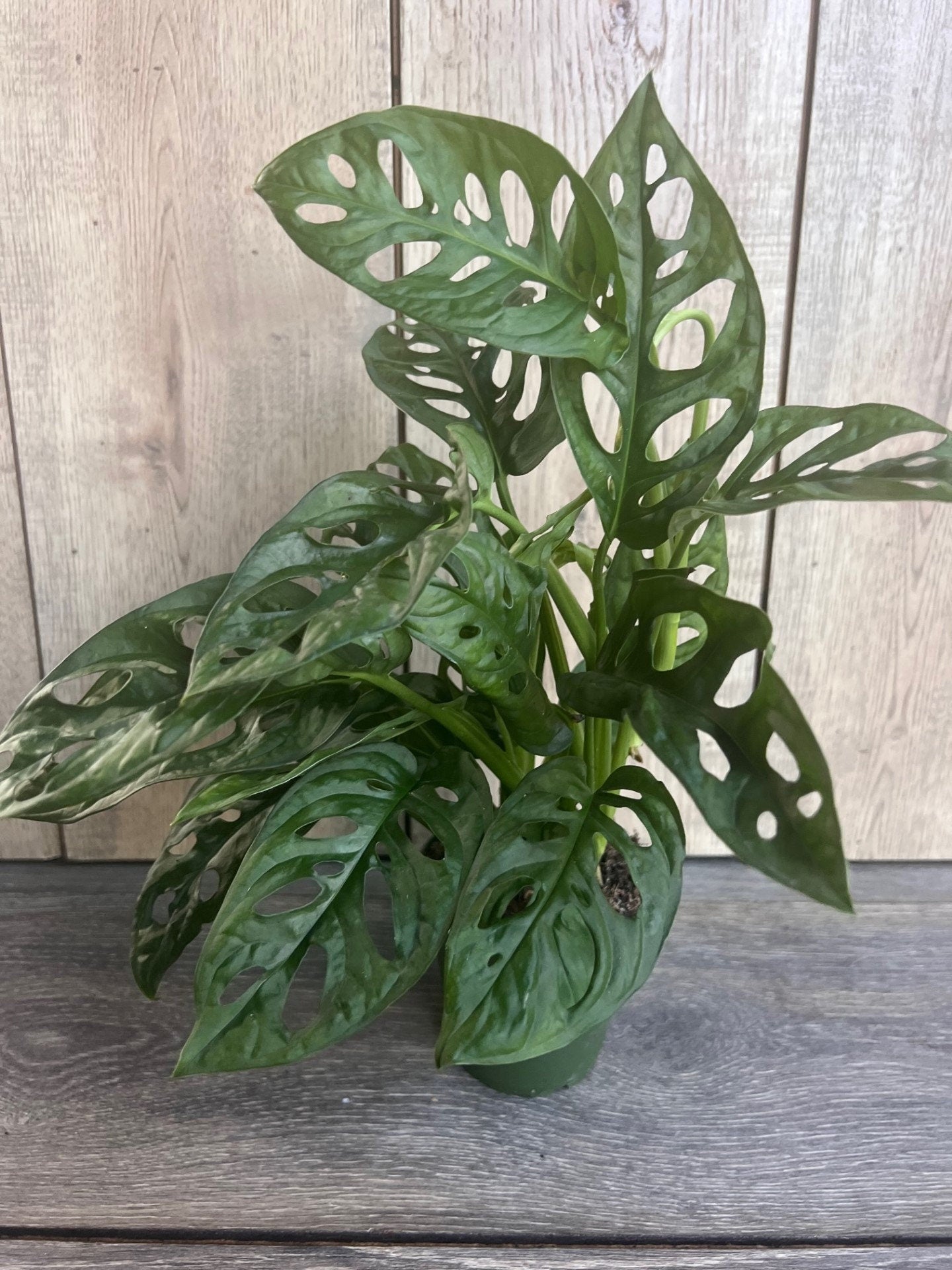Monstera Adansonii in 4"pot
Monstera Adansonii in 4"pot
Couldn't load pickup availability
Note: You will receive healthy and established Monstera adansonii (commonly called Swiss Cheese Vine) plant that is in4" pot Similar to the pictures.
Monstera adansonii, commonly known as the Swiss Cheese Plant or Five-Holes Plant, is a popular tropical vine native to Central and South America. This fast-growing plant is renowned for its unique, heart-shaped leaves with distinctive perforations, giving it a "cheese-like" appearance. Its trailing growth habit makes it ideal for hanging baskets or trellises. Monstera adansonii thrives in bright, indirect light, humid conditions, and well-draining soil. It's a low-maintenance plant that adapts well to indoor environments and is prized for its air-purifying qualities and striking foliage.
Key Care Tips for Monstera adansonii
1. Light
- Bright, Indirect Light: Monstera adansonii thrives in bright, indirect light. While it can tolerate low light, growth will slow down and the leaves may have fewer holes. Avoid direct sunlight, which can scorch its leaves. A spot near an east- or west-facing window is ideal for optimal growth.
2. Temperature
- Warm Conditions: This plant prefers temperatures between 65°F and 85°F (18°C - 29°C). Avoid cold drafts or temperatures below 50°F (10°C), which can cause stress or damage to the plant. Keep it in a warm area of your home, away from windows that may let in cold air during winter.
3. Humidity
- High Humidity: As a tropical plant, Monstera adansonii prefers humidity levels of 60-80%. To boost humidity, consider placing the plant near a humidifier, using a pebble tray with water, or occasionally misting the leaves (but avoid over-wetting them). If the air is too dry, the plant may become leggy or develop brown edges on the leaves.
4. Soil
- Well-Draining Potting Mix: Use a well-draining, aerated potting mix. A mix designed for houseplants or tropical plants works well. Alternatively, create your own blend using coconut coir, peat moss, and perlite for good drainage. Monstera adansonii does not like to sit in waterlogged soil, so ensure the pot has drainage holes.
5. Watering
- Moderate Watering: Water the plant when the top 1-2 inches of soil feel dry. Be careful not to overwater, as it can lead to root rot. In winter, reduce watering frequency since the plant’s growth slows down. Always use room temperature water to avoid shocking the roots.
6. Fertilization
- Regular Feeding During Growing Season: Fertilize every 4-6 weeks during spring and summer with a balanced, water-soluble fertilizer diluted to half strength. Reduce fertilizing in fall and winter when the plant’s growth slows down. Avoid over-fertilizing, as it can lead to salt build-up in the soil.
7. Pruning and Support
- Pruning: While not essential for healthy growth, you can prune Monstera adansonii to encourage bushier growth or remove any damaged or leggy stems. Use clean, sharp scissors to trim back vines as needed.
- Support for Climbing: In its natural habitat, Monstera adansonii climbs trees. To encourage it to grow upwards, provide a moss pole, trellis, or other support structure. This will promote a more upright growth habit and result in larger, more mature leaves with more pronounced perforations.
8. Repotting
- Every 1-2 Years: Repot Monstera adansonii every 1-2 years to refresh the soil and provide room for growth if it has outgrown its pot. Choose a pot that is 1-2 inches larger in diameter than its current one. Ensure the new pot has drainage holes to prevent waterlogging.
9. Pests and Problems
- Common Pests: While relatively pest-resistant, Monstera adansonii can occasionally attract spider mites, mealybugs, aphids, or scale insects. Treat infestations with neem oil or insecticidal soap and remove any affected leaves.
- Leaf Issues: Yellowing leaves may indicate overwatering or poor drainage. Brown spots or crispy leaf edges are signs of low humidity or underwatering. Leaf drop can occur from sudden temperature changes or insufficient light.
10. Propagation
- Easy to Propagate: Monstera adansonii is easy to propagate through stem cuttings. Cut a healthy stem with at least one node (the bump where leaves or roots grow), then place it in water or soil. It will root in a few weeks if kept in a warm, bright location with indirect light.
Summary
Monstera adansonii is a low-maintenance tropical plant that thrives in bright, indirect light, moderate humidity, and well-draining soil. It benefits from regular watering but should not be overwatered. The plant grows best in warm temperatures and can be pruned or supported with a trellis to encourage climbing. With minimal care, it will quickly become a striking, lush vine with perforated leaves that add a bold statement to any home or office.
Share
